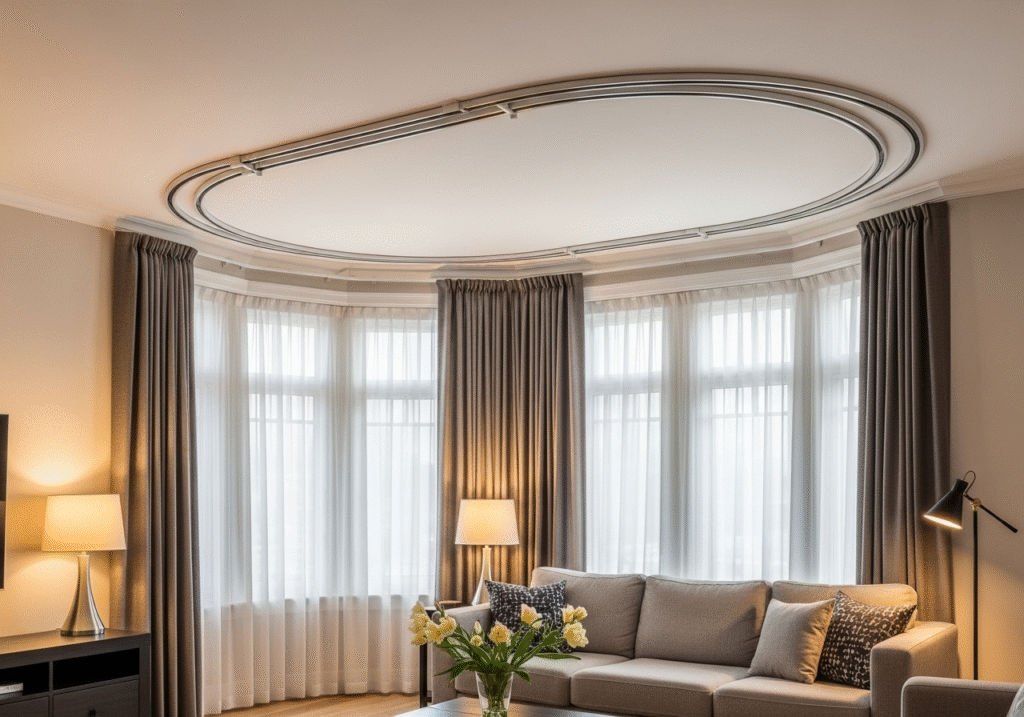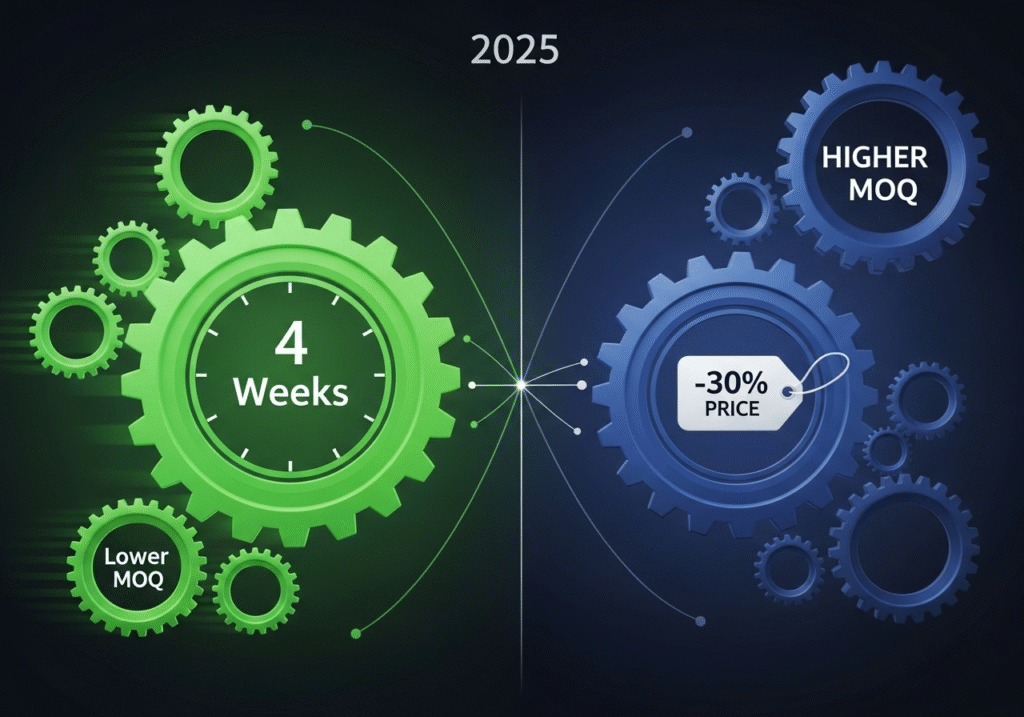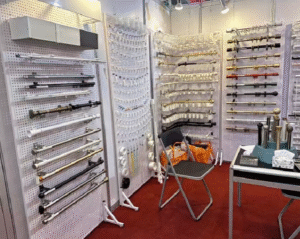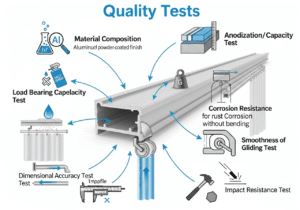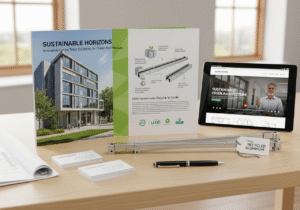Your sales team has a fantastic pitch, highlighting your track's recycled aluminum and low-VOC finishes. Yet, when you talk to green architects, the message doesn't seem to land. You’re left wondering why your eco-friendly product isn't the obvious choice for their sustainable building projects. It’s frustrating when you know you have the right materials but can't seem to get the specification. The truth is, marketing to these professionals requires a different approach, one that speaks to their deepest professional fears over their greenest aspirations.
To market sustainable curtain tracks to green architects, brands must lead with performance, durability, and reliability, not just eco-credentials. Architects’ primary concern is avoiding product failure, so focus on metrics like 10,000-cycle durability tests, low decibel ratings for motors, and smooth glide performance. Use sustainability documentation like Environmental Product Declarations (EPDs) and recycled content certificates as the essential price of entry—proof of your claims—rather than the main selling point. This strategy builds trust by showing you understand that a product must first be dependable before it can be sustainable.
From my years on the factory floor, I learned a simple truth: architects hate callbacks. A product that fails—a motor that whines, a track that sticks, a finish that peels—is a mark against their name for years to come. Their reputation is their most valuable asset. While they genuinely want to specify sustainable products, they will not risk their reputation on a product that might cause problems for their client down the line. Sustainability gets you in the door, but performance is what closes the deal. We need to prove our products are not just green, but rock-solid. Let's break down the real questions architects are asking and how to answer them in a way that builds unshakable confidence in your brand.
Are curtain tracks made from recycled aluminium suitable for LEED / BREEAM projects?
You’re targeting a major commercial project pursuing LEED or BREEAM certification. You know your curtain track is made from recycled aluminum, but the architect’s team is asking for specific credit contribution details, and you feel uncertain. Getting this information wrong feels risky; it could mean losing the specification and watching a competitor take your place. The pressure is on to provide clear, accurate data that proves your product’s value, but the certification language can feel like a maze.
Yes, curtain tracks made from recycled aluminum are highly suitable for and can directly contribute to LEED and BREEAM projects. They primarily support credits within the "Materials and Resources" (MR) category by demonstrating recycled content and responsible sourcing. For architects specifying your products, it's crucial to provide clear documentation showing the exact percentage of post-consumer and pre-consumer recycled material. This allows them to easily calculate their project’s overall recycled content value, making your track an asset for achieving their certification goals.
On paper, the value of recycled aluminum is clear. It lowers the environmental impact of a project and ticks a box for green building certification. However, an architect’s thought process goes much deeper than that. They are connecting the material choice to long-term performance. My experience in manufacturing has shown me they are silently asking, "Does using recycled content compromise the structural integrity?" This is where we need to be proactive.
Proving Structural Integrity
The first step is to provide performance data that matches or exceeds that of tracks made from virgin aluminum. We run tests on tensile strength and load-bearing capacity. By presenting a spec sheet that shows our recycled aluminum track can handle heavy, long-drape curtains without sagging over a ten-year lifespan, we move the conversation from a sustainability checkbox to an engineering guarantee. This reassures the architect that they aren't trading durability for green points.
The Importance of a Flawless Finish
Next, an architect will look at the finish. Recycled materials can sometimes have inconsistencies, and for a high-end project, a perfect finish is non-negotiable. We market our powder-coating and anodizing processes, emphasizing the quality control that ensures a uniform, durable, and scratch-resistant surface. Showing them physical samples is key here. Let them see and feel that the finish on our recycled track is identical to any other premium architectural product.
Documentation and Supply Chain
Finally, we make the paperwork effortless. Architects are busy. Instead of just stating "made with recycled aluminum," we provide a ready-to-use "LEED Submittal Package." This document clearly states the pre- and post-consumer recycled content percentages, the location of our manufacturing facility (to help with local sourcing credits), and our chain-of-custody information. By doing the heavy lifting for them, we become an easy and reliable partner to work with.
| Feature | Architect's Concern | Our Marketing Solution |
|---|---|---|
| Material Source | Does recycled content mean weaker? | Provide load-bearing and tensile strength test results. |
| Aesthetic Quality | Will the finish be inconsistent or cheap-looking? | Showcase high-quality finish via samples and QC process. |
| Certification | Is this going to create more paperwork for me? | Deliver a pre-packaged, easy-to-use LEED/BREEAM submittal. |
How can motorized curtain tracks contribute to a building’s energy performance?
You're talking to an architect about a building designed for optimal energy efficiency. You mention your motorized tracks, but they seem to see them as just a luxury feature, an added cost and complexity. You know your product can play a real role in the building's performance, but you're struggling to frame it as a functional necessity rather than a high-end gadget. This disconnect means you could be missing out on specifications where your system could be a core part of the design strategy.
Motorized curtain tracks contribute significantly to a building's energy performance by enabling automated daylighting and thermal control. When integrated with a Building Management System (BMS), they can automatically close curtains during peak sun hours to reduce solar heat gain, lowering cooling costs. Conversely, they can open curtains during winter months to maximize passive solar heating. This dynamic control helps maintain consistent indoor temperatures and reduces reliance on HVAC systems, directly contributing to energy savings and improved occupant comfort.
While the energy savings are a great benefit, the architect’s first thought often goes to reliability and noise. A motor that fails or makes a loud, grinding noise is a major problem. From our perspective as a manufacturer, the marketing message must address this head-on. An architect won't specify an "energy-saving" system if they believe it will become a maintenance nightmare or an acoustic annoyance for the building's occupants.
Leading with Quiet Operation
The first performance metric we highlight is the decibel (dB) rating of our motors. We know that in a quiet office, a library, or a high-end residence, noise is a deal-breaker. We market our motors as "silent" or "whisper-quiet" and back it up with a specific dB rating—for example, under 35 dB. This is a tangible piece of data that an architect can trust. It speaks directly to occupant comfort, which is just as important as energy efficiency in their design.
Emphasizing Durability and Integration
Next, we prove the system's reliability. We don't just say it's durable; we provide data from 10,000-cycle tests (the equivalent of opening and closing the curtains twice a day for over 13 years). This demonstrates that the motor and track can withstand long-term, heavy use. We also emphasize seamless integration. Our marketing materials show how easily our systems connect with popular BMS platforms like Crestron or Lutron, with clear wiring diagrams and technical support. This assures the architect that specifying our product won't create an integration headache for the electrical engineers.
Quantifying the Energy Savings
Only after we have established the system's quietness and reliability do we focus on the energy story. And we do it with numbers. We provide case studies or energy modeling data that shows, for example, "a potential 15% reduction in annual cooling costs" for a building with a west-facing glass facade. This turns a vague benefit into a tangible return on investment (ROI) that the architect can present to their client.
| Feature | Architect's Concern | Our Marketing Solution |
|---|---|---|
| Motor Noise | Will this system be disruptive for occupants? | Market the low decibel (dB) rating; use terms like "silent." |
| Reliability | Will the motor fail after a few years? | Provide data from 10,000-cycle durability testing. |
| BMS Integration | Is this compatible with my control system? | Showcase seamless integration with major BMS brands. |
| Energy Impact | Is the energy saving claim real? | Use case studies and modeling to quantify savings (e.g., % cost reduction). |
Do low-VOC finishes and recycled tracks meet architects’ durability requirements?
You're proud of your product's eco-friendly credentials—a low-VOC finish on a recycled aluminum track. But when you present it to an architect, you get a hesitant response. They're worried that "eco-friendly" is code for "less durable." They’ve seen "green" paints that scuff easily or finishes that don't hold up in high-traffic commercial spaces. Their hesitation could cost you the project, as they default to a time-tested, less-sustainable option they trust will last.
Yes, modern low-VOC finishes and recycled-content tracks are engineered to meet or even exceed the durability and acoustic requirements of architects. High-performance powder coatings with low or zero volatile organic compounds (VOCs) offer excellent scratch resistance, color retention, and longevity. Similarly, recycled aluminum tracks maintain the same structural integrity and load-bearing capacity as virgin material. When it comes to acoustics, the track's design and the quality of its gliders—not the recycled content—determine its quietness, ensuring smooth and silent operation.
An architect's job is to specify products that will look good and function perfectly on day one, and on day 1,001. From a manufacturing standpoint, we know that a sustainable product that fails is worse than a conventional product that succeeds. The architect’s reputation is on the line. So, our marketing must demolish the myth that "green" means "weak." We do this not with promises, but with hard proof of performance that stands up to the toughest commercial environments.
Proving Finish Durability
We don't just say our low-VOC finish is durable; we prove it with industry-standard test results. We send our tracks to labs for abrasion and scratch resistance testing (like the ASTM D3363 pencil hardness test) and salt spray tests for corrosion resistance. We then put these test certifications right in our marketing materials. This data-driven approach tells an architect that our finish isn't just eco-friendly—it's tough enough for a hotel, hospital, or busy office.
Guaranteeing Structural and Acoustic Performance
For the recycled aluminum track, we again lead with strength. We provide load-bearing charts that clearly state how much weight the track can support per foot, with specific bracket spacing. This allows an architect to specify our track for heavy, blackout, or acoustic curtains with complete confidence. For acoustics, we focus on the gliders. We market our high-density polymer or wheeled gliders, emphasizing their design for a "frictionless, silent glide." The message is clear: quiet operation comes from smart engineering, not from the raw material.
Offering a Strong Warranty
Finally, nothing speaks louder than a strong warranty. Offering a 10-year warranty on both the track's structural integrity and its finish is the ultimate statement of confidence. It tells the architect that we, the manufacturer, stand behind our product's long-term performance. It shifts the risk from them to us, making it a much easier decision for them to specify our sustainable product.
| Feature | Architect's Concern | Our Marketing Solution |
|---|---|---|
| Finish Durability | Will this low-VOC paint scratch or fade easily? | Provide certifications from abrasion and corrosion resistance tests. |
| Track Strength | Can a recycled track hold heavy commercial drapery? | Offer detailed load-bearing capacity charts and specifications. |
| Acoustics | Will the track be noisy when curtains are drawn? | Market the design of the gliders for a "silent glide." |
| Overall Risk | What if it fails in 5 years? | Back the product with a comprehensive 10-year warranty. |
What documentation do architects require when specifying curtain track systems?
An architect has expressed interest in your sustainable curtain track system, but now their team is asking for a long list of documents: EPDs, HPDs, test reports, and more. You feel overwhelmed, and your sales team is struggling to gather the right files. This delay and confusion can make your brand appear unprofessional or unprepared. The architect might lose patience and simply switch to a supplier who has all their documentation organized and readily available, causing you to lose the specification entirely.
Architects require clear, comprehensive, and easily accessible documentation to specify curtain track systems, especially for sustainable projects. The most critical documents include an Environmental Product Declaration (EPD) to show lifecycle impact, a Health Product Declaration (HPD) for material transparency, and third-party test reports verifying performance claims (e.g., durability, acoustics, load capacity). Additionally, they need technical data sheets with precise dimensions, installation guides, and proof of recycled content. Providing this information in a consolidated, digital format is essential for winning their trust.
From my experience running a factory, I see documentation as part of the product itself. If it’s messy, incomplete, or hard to get, the architect will assume the product is too. They are building a massive, complex project, and they need partners who make their job easier, not harder. They don't have time to chase down missing papers. Our marketing and sales process must be built around the idea of effortless specification. We anticipate their needs and provide everything they require before they even have to ask.
Creating a Digital Resource Hub
The most effective strategy is to create a dedicated "Architect Resources" section on our website. This isn't just a list of links; it's a well-organized library. We structure it so they can easily find what they need. They can download a complete submittal package for a specific product line, or they can pick and choose individual files. This portal should contain everything: CAD files, BIM models, installation manuals, and all sustainability certificates.
Making Sustainability Data Clear
For our green credentials, we don't just upload the EPD or HPD document. We create a one-page summary sheet called a "Sustainability Profile." This document translates the technical data into clear benefits. For example, it will state: "Contributes to LEED MR Credit: Building Product Disclosure and Optimization," and then list the relevant documents. This saves the architect the time of reading through a dense, 20-page report to find the one piece of information they need.
The Power of Third-Party Validation
Self-declared claims mean very little. Architects look for third-party validation. Our marketing materials prominently feature the logos of the organizations that have certified our products, like UL for Greenguard Gold (low VOCs) or the International Living Future Institute for Declare Labels. These logos are signals of trust and credibility. They show that our claims have been independently verified, which gives the architect the confidence to defend their product choice to their client.
| Document Type | Architect's Need | Our Marketing Solution |
|---|---|---|
| Sustainability | I need the EPD, HPD, and recycled content info. | Provide a one-page "Sustainability Profile1" with links to full reports. |
| Technical Data | I need CAD/BIM files and installation details. | Create a centralized, organized "Architect Resources2" hub on the website. |
| Performance | I need proof of your durability and acoustic claims. | Offer downloadable, third-party lab test reports for all claims. |
| Credibility | How do I know I can trust your claims? | Display logos from respected third-party certifiers (e.g., UL, ILFI). |
Conclusion
In the end, marketing to green architects isn't about having the greenest product; it's about being the most trusted partner. My time on the factory floor taught me that products must solve problems, not create them. For an architect, the biggest problem is risk—the risk of failure, the risk of a dissatisfied client, and the risk to their professional reputation. Therefore, our marketing must be a promise of performance, reliability, and peace of mind. We lead with the data that proves our tracks are quiet, durable, and flawlessly engineered. The sustainability documentation is the essential proof that we share their values, but our commitment to quality is what ultimately earns their specification.



